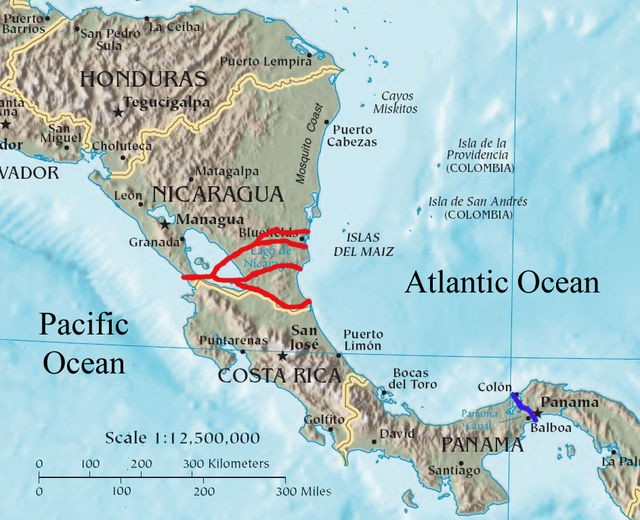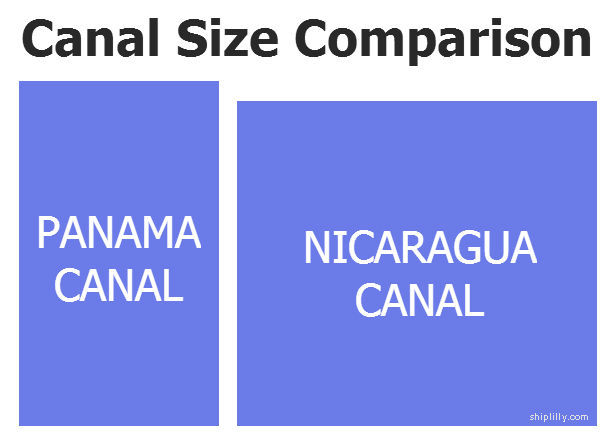For the past 100 years, the main connection between the Atlantic and Pacific Oceans has been the Panama Canal. Shippers needing to transport goods around the world have often utilized the small channel, which allows boats to cut considerable time off their journeys. As history would have it, the United States has primary control over not just the Panama Canal, but also the Suez Canal and the major trade routes through Singapore, Gibraltar, and some other regions.
The planned Nicaragua Interoceanic Grand Canal
In the coming years, the United States may be facing competition in the control of international waters. Why? Because Russia has entered into negotiations with China and Nicaragua to build the Interoceanic Grand Canal. The route, rejected by American engineers over a century ago, will offer a deeper, wider, and longer waterway than its Panamanian counterpart. Although the new route could provide economic benefits to countries looking to avoid the Panama Canal (namely China), Russia’s primary motivation is much more political.

Source: Wikipedia
Russia’s motives for pursuing this new canal?
Essentially, the north Asian country is simply looking to challenge American authority in international shipping. According to Sergei Pravosudov, head of Russia’s Institute of National Energy, “The emergence of an alternative waterway is a direct challenge to the U.S.” A leading research associate with the Institute of Latin America at the Russian Academy of Sciences elaborated on the political calculation by stating, “The U.S. will lose a considerable amount of control over a territory which, thanks to the Panama Canal, has been under its control for the past 100 years.”
Other analysts have focused more on the lack of economic benefits to Russia. Russia relies mostly on northern sea routes to transfer goods, and the country would see more financial gain by expanding shipping traffic in the Artic. Frankly, China stands much more to gain from the project, as it needs a shorter route for importing and exporting shipments.
How big is the Nicaraguan Canal and when will it be operational?
The new canal will be 72 ft. wide and 65 ft. deep, which dwarfs the 69 ft. depth and 40 ft. width of the Panama Canal. Due to its larger size, the new waterway will be able to handle ships with deadweight up to 270,000 lbs. Nicaraguan authorities plan to start construction later this year, with a projected partial operation date of early 2019. Shippers shouldn’t expect to utilize full operation of the canal until 2029, however.

Russia’s role in the project
Of particular significance to American officials is Russia’s role in this project. While the nation is unlikely to provide much economic or organizational support, it will ramp up its military presence in the area at least until 2015. Russian warships and aircraft will patrol the Nicaraguan coast and parts of the Caribbean Sea as part of its tripartite agreement between the Latin American nation and China.
How exactly this project will affect American shippers is yet to be seen. Of course, the Panama Canal isn’t going anywhere, but a new option operated by Eastern nations that the U.S. doesn’t necessarily consider “allies” could have a variety of economic, political, and social consequences.



